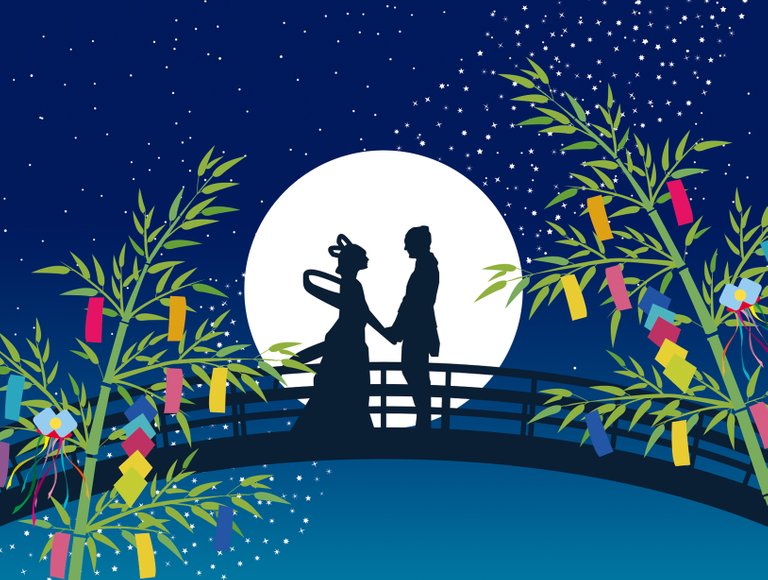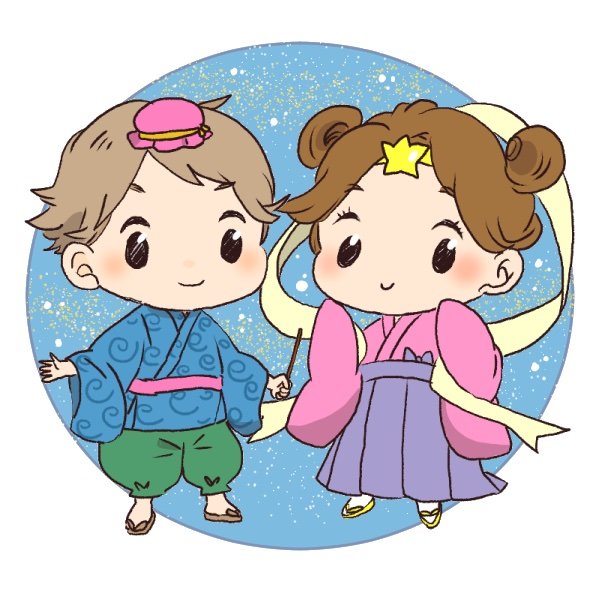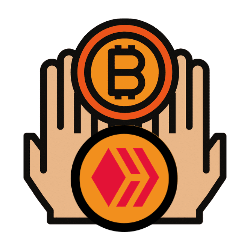A few days ago, July 7th, was Tanabata. (Well, kind of. The dates are confusing. See below). What is Tanabata? Stick around to find out!!

Tanabata: Star Festival
Tanabata (七夕) is one of the most popular festivals. Kids love it because they get a wish, and adults (especially young women) love it because of the romantic story that goes along with it. It involves a cosmic tale of romance, hence the "star" in star festival (星祭り, hoshi matsuri).
The festival celebrates the meeting of the stars Vega and Altair, which represent the gods Orihime and Hikoboshi in mythology. According to the myth, this is the one day of the year that these two lovers can meet. The rest of the year they are separated from each other by the Milky Way.
One of the main ways people celebrate is by writing their wishes on thin notecards called tanzaku (短冊) and these are then hung from bamboo trees. Some people write their wish in the form of poetry (tanzaku were traditionally used for poetry) but many others just write the wish in regular form. In some places the wishes are burned or set afloat on a river.
There are often also typical festival events like games and street food.
It has been celebrated since the Heian Period (794–1185), when little girls would be encouraged to become proficient in weaving as one of their preparations for running a home, and little boys would be encouraged to become masters of penmanship. They would both write wishes for these things on tanzaku. As time when on, farmers adopted the practice and would write wishes for good harvests.
All in all it's a fun event!
Let's cover the origin story and then look at some of the confusion over the date of the day.

The Origin Story!
There are many versions of the story. Just google around and you'll find a multitude of them. This is the one I was first told back when I learned about it.
Orihime (Weaving Princess, 織姫), was a great weaver of clothes. She was a beautiful girl and the clothes she wove were also very beautiful. Because she worked constantly on her weaving, she had no time to meet anyone; as such she had a quiet sadness about herself.
Her father, Tentei (Sky King, 天帝), noticed her loneliness and arranged for her to meet Hikoboshi (Cowhearder Star, 彦星) who lived on the other side of the Ama-no-gawa (River of Heaven, 天の川, a poetic name for the Milky Way). The two met and fell instantly in love. They soon got married.
So obsessed were they with each other that Orihime stopped her weaving and Hikoboshi stopped caring for his cow, allowing them to roam all over the heavens. Tentei became furious at this and separated the lovers across Ama-no-gawa, forbidding them from ever meeting again.
Orihime fell into a deep depression and begged her father to allow them to meet. Seeing his daughter's sadness, Tendai agreed to allow them to meet one day every year: the seventh day of the seventh month. It is for this reason that we celebrate.
Date Confusion
On the old Japanese calendar (very similar to the Chinese calendar), this festival marked the shift from summer to autumn.
With the Meiji period (1868-1912), Japan changed from the traditional calendar to the Western one, essentially shifting everything back about a month. As a result, many traditional events remain on the same date as they have always been celebrated, but this date is in actuality about a month ahead of when they would have traditionally been celebrated. That is why a festival to celebrate the change to autumn is now celebrated in midsummer.
here) that her hometown in Hokkaido also used August 7.While most of Japan celebrates the day on July 7th, some places in Japan changed the date to try to adjust for the calendar change, usually picking August 7th as the new day. Sendai, which hosts the largest Tanabata festival in Japan, famously does this (theirs is Aug 6-8). @koto-art mentioned (
The actual date if we were trying to match up with the old calendar would be anywhere from the start to the end of august. The old calendar was a lunar one so the actual date of the old seventh day of the seventh month on our Western calendar would be different every year. This year it would be August 4th. Next year it will be August 22nd.
Haiku
Bashō referenced this day in his book Oku no Hosomichi. In an entry on the 7th day of the 7th month (Aug 21st on the new calendar) he found himself looking out towards Sado Island. He wrote:
荒海や佐渡に横たふ天の河
ara umi ya Sado ni yokotau Ama-no-gawa
a wild sea
stretching to Sado
the Milky Way
Sado was a place of riches, but also a place that many figures in history had been exiled to. The violent sea a metaphor for this violent history. But above all this, illuminating us with their shimmering light, the Milky Way. It is that sudden shift from violence to the profound that makes this one of his most famous haiku.
Amanogawa is a season word for autumn and is very commonly used to refer to the story of Orihime and Hikoboshi in haiku.
Summery
I think the story is from China, so perhaps @kaixin has heard of it. It may be in Korea too.
I imagine a lot of people reading this blog have never seen the Milky Way with the naked eye. Light pollution being what it is, it's tough to see any stars clearly from all but the smallest cities. In pre-electric Japan it would have been a lot easier to see and enjoy. If you've ever been somewhere away from light pollution when the sky is clear, you know how absolutely amazing it can be to see the Milky Way.
Anyway, in honor of the day, why not make a wish and hope for the happiness of those two star-crossed lovers.
❦

 |
David LaSpina is an American photographer and translator lost in Japan, trying to capture the beauty of this country one photo at a time and searching for the perfect haiku. |
If this blog post has entertained or helped you, please follow/upvote/reblog. If you want to further support my writing, donations are welcome.
Nice post! I often share your posts with my students because there are many nice Japanese topics in your posts:)
I hope you had a good Tanabata day!
🥦 !BBH !PGM 🥦
It was good. I hope you had a nice one too!
BUY AND STAKE THE PGM TO SEND A LOT OF TOKENS!
The tokens that the command sends are: 0.1 PGM-0.1 LVL-2.5 BUDS-0.01 MOTA-0.05 DEC-15 SBT-1 STARBITS-[0.00000001 BTC (SWAP.BTC) only if you have 2500 PGM in stake or more ]
5000 PGM IN STAKE = 2x rewards!
Discord
Support the curation account @ pgm-curator with a delegation 10 HP - 50 HP - 100 HP - 500 HP - 1000 HP
Get potential votes from @ pgm-curator by paying in PGM, here is a guide
I'm a bot, if you want a hand ask @ zottone444
All stories were written in the stars, or so I was told.
!PGM
!PIMP
You must be killin' it out here!
1.000 PIMP@operahoser just slapped you with , @dbooster.
You earned 1.000 PIMP for the strong hand.
They're getting a workout and slapped 1/1 possible people today.
Read about some PIMP Shit or Look for the PIMP District
BUY AND STAKE THE PGM TO SEND A LOT OF TOKENS!
The tokens that the command sends are: 0.1 PGM-0.1 LVL-2.5 BUDS-0.01 MOTA-0.05 DEC-15 SBT-1 STARBITS-[0.00000001 BTC (SWAP.BTC) only if you have 2500 PGM in stake or more ]
5000 PGM IN STAKE = 2x rewards!
Discord
Support the curation account @ pgm-curator with a delegation 10 HP - 50 HP - 100 HP - 500 HP - 1000 HP
Get potential votes from @ pgm-curator by paying in PGM, here is a guide
I'm a bot, if you want a hand ask @ zottone444
Indeed!
Yeah, I have heard about this beautiful folktale since childhood. China still celebrates it on the 7th day of 7th month(with the Chinese lunar calender) , so it can fall on the different date of the Western calender every year. Now in China Double-Seventh Day(Tanabata) is equal to the Western Valentine's Day specially for lovers, but it is said that in ancient China, it was also for young girls to be proficient in weaving.
Legend has it that on each Double-Seventh Day the magpies fly together to form a bridge across the Milky Way, helping Orihime and Hikoboshi meet each other. In my local place, it is entering the rainy season(the point from Summer to Autumn). When we hear the sound of showers in that night, we just say that it is the sound of their weeping.
At the same time, I love Bashō's Haiku. It is so wonderful to associate the wild sea towards Sado Island with the insurmountable Milky Way in heaven.
Below is a video of its Chinese version I find on Youtube with English subtitles.
Ah ok, so you do have the same story in China. I guessed you did. Probably Japan took from there in the Heian period when they took many other things from China. The Chinese version of the story is much more dramatic! Thanks for sharing that!
I didn't mention that in the Japanese version of the tale, on years when it rains on the 7th day of the 7th month, the river of heaven is said to have flooded so they can't meet that year, and so the rain we feel on earth is their tears.
Oh, if not for your blog about Tanabata, I would have never known there is a 'Double-Seventh festival' in Japan, too. It is really interesting to learn about the history links among different countries and regions. Last time I just learned the origin and spread of Oden from your blog. I doubt if there is 'Dragon Boat Festival' in Japan. If so, is there also a beautiful but sad love story--Madam White Snake associated with 'Dragon Boat Festival' ? It seems that in Chinese folktales the true lovers are always forced to seperate...
It is said that on the 'Dragon Boat Festival' which is a very old festival in memory of QuYuan, the herbal medicines have the strongest effect on exorcising the evil spirits. Except eating the Zongzi, in some other places of South China, people may hang the mugwort on the wall or door and drink the realgar wine which can make demons reveal their true features in the folktale.
Here is the story of 'Madam White Snake'.
P.S. I just check the origin of this story online. It shows it was born in Ming dynasty, matured in Qing dynasty. Oh, a big surprise to me! Just a near-term legend, although the story being set in the Southern Song Dynasty(should be after the Heian period of Japan). It must not be so popular as the story of Cowherd and Weaver outside China.
Because this is such an awesome post, here is a BBH Tip for you. . Keep up the fantastic work
. Keep up the fantastic work
I didn’t know about this celebration in Japan, thanks a lot for sharing, it’s so beautiful to learn about different cultures!